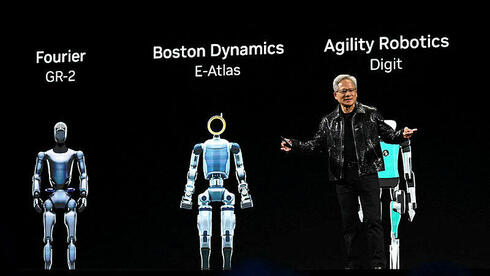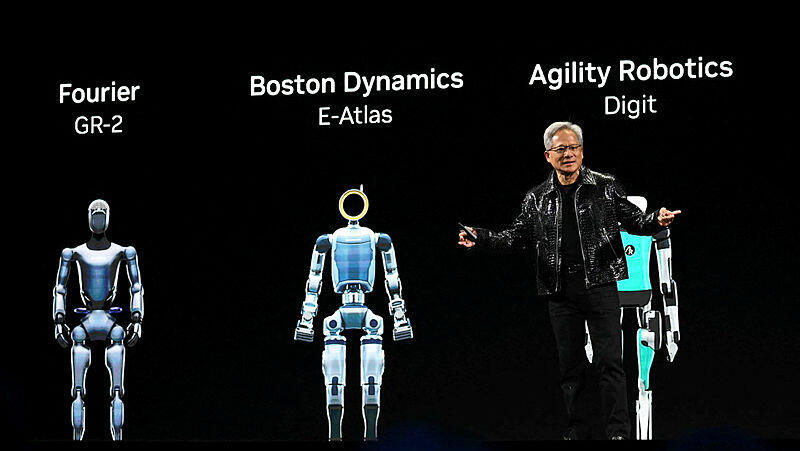
Jensen Huang : "The ChatGPT moment for general robotics is just around the corner"
The CEO of chip giant Nvidia presented a series of new developments at CES including the Cosmos platform, which aims to accelerate the development of robots and autonomous vehicles, as well as desktop supercomputers designed to provide researchers and developers with access to the processing capabilities of Nvidia's AI chips.
Nvidia is betting that the next major breakthrough in artificial intelligence will occur in physical applications such as robotics and autonomous vehicles. At CES in Las Vegas on Monday, Nvidia’s founder and CEO, Jensen Huang, unveiled a series of new products and services aimed at driving advancements in these fields. “The ChatGPT moment for general robotics is just around the corner,” Huang said.
Standing on stage alongside more than a dozen humanoid robots, Huang outlined Nvidia’s vision for the future of AI and technology. He predicted that Nvidia’s products will power a billion humanoid robots, 10 million automated factories, and 1.5 billion autonomous cars and trucks in the coming years.
One of the key announcements was Cosmos, a platform designed to accelerate the development of robots and autonomous vehicles. Cosmos leverages "world foundation models"—AI systems that simulate the physical world, including physics, spatial relationships, and movement dynamics. These models allow for the creation of virtual environments where autonomous systems, such as robots and vehicles, can be trained without the need for costly real-world data collection. Like large language models, world foundation models are fundamental to advancing robot and AV development, yet not all developers have the expertise and resources to train their own, Huang said.
Nvidia also introduced advancements in Agentic AI, which it describes as the next evolution of Generative AI. AI agents, capable of autonomously performing tasks based on instructions, are becoming essential in sectors like customer service, fraud detection, and supply chain management. Nvidia unveiled new large language models (LLMs) based on Meta’s Llama, tailored for developing these agents. These agents, Nvidia noted, can analyze massive datasets, such as the 7 trillion hours of video captured annually by industrial and corporate cameras, to identify issues like defects in production or provide actionable insights in sports performance analysis.
Another significant announcement was Project Digits, a line of affordable desktop AI supercomputers. Built on Nvidia’s new Grace Blackwell GB10 chip, which delivers a petaflop of AI performance, these machines aim to make high-performance AI accessible to researchers, developers, and students. Starting at $3,000, the computers will be available in May and allow users to develop and deploy large AI models directly from their desktops. “This is NVIDIA’s latest AI supercomputer,” Huang said, showcasing the device. “It runs the entire NVIDIA AI stack — all of NVIDIA software runs on this. DGX Cloud runs on this.”
Nvidia also expanded its Nvidia Drive autonomous vehicle platform, announcing partnerships with Toyota, Aurora, and Continental. Continental plans to begin commercial production of Level 4 autonomous trucks, developed using Nvidia Drive, by 2027. Existing collaborations with automakers such as Mercedes, Volvo, and Jaguar Land Rover further solidify Nvidia’s role in the automotive industry. “The autonomous vehicle revolution is here,” Huang said. “Building autonomous vehicles, like all robots, requires three computers: NVIDIA DGX to train AI models, Omniverse to test drive and generate synthetic data, and DRIVE AGX, a supercomputer in the car.”














